- Home
- Paula Byrne
The Real Jane Austen Page 8
The Real Jane Austen Read online
Page 8
Like all big families, the Austens had their own private language, their in-jokes. Many of the allusions are no doubt lost on us, but certain ones can be deduced. Jane was known to have red cheeks, so there are several jokes about young women who have too much red in their cheeks. Again, Jane drew on the names of family members in stories such as ‘The Beautifull Cassandra’ and ‘Henry and Eliza’. It is hardly a coincidence that a story dedicated to Frank includes a pious young man who is torn between entering the Church and joining the navy, and thus becomes a chaplain on board a man of war. Another story describes a boy who, like Charles and Frank, is ‘placed at the Royal Academy for Seamen at Portsmouth when about thirteen years old’. On graduating he is ‘discharged on board one of the vessels of a small fleet destined for Newfoundland … from whence he regularly sent home a large Newfoundland Dog every Month to his family’.25 And one suspects some sort of family joke in a story dedicated to Austen’s mother, in which Jane writes, ‘I saw you thro’ a telescope, and was so struck by your Charms that from that time to this I have not tasted human food.’26
The little ‘History of England’ in Volume the Second is a genuine family production: it is peppered with caricature illustrations of the kings and queens of England, drawn by Jane’s sister Cassandra. They are jokily responsive to Jane’s narrative. Cassandra’s portrait of Queen Elizabeth presents her as shrewish and ugly with a long witch-like nose, while Mary Queen of Scots is full of face, pink-cheeked and beautiful with dark, curly hair. Edward IV, whom Jane notes is ‘famous for his beauty’, is drawn to look like a pig-farmer.
Comparison of the cartoons with surviving portraits has led to the recent suggestion that ‘The History of England’ may be even more of a family affair than previous biographers have realized.27 Henry V, the exemplary soldier-king, bears an uncanny resemblance to Henry Austen, who was seriously considering a career in the army. James I looks somewhat like James Austen and Edward VI like Edward Austen. The ugly Edward IV, who appears to be wearing the garb of an Evangelical clergyman, is the spitting image of a cousin whom Jane heartily disliked – Edward Cooper, an Evangelical clergyman. Elizabeth I has Mrs Austen’s hooked nose. If this hypothesis is correct, there can be only one candidate for resemblance to the heroine of the piece, Mary Queen of Scots. It would appear that Cassandra painted her in the likeness of her sister Jane. Mary Queen of Scots has red cheeks, a small mouth, large eyes and a strong nose, a small but perfectly formed miniature of the seventeen-year-old Jane. This could well be the biggest joke of all: that the young author might just be visible before our eyes.
‘Run mad as often as you chuse; but do not faint –’: so says Sophia, one of the (anti-) heroines of ‘Love and Freindship’.28
Though Jane Austen was a great advocate of the novel as a literary form, she was well aware of its limitations. In order to break the mould with her writing, she had to establish what she disliked and what didn’t work. Jane Austen loved the novels of Samuel Richardson and Fanny Burney, but she was not afraid to parody their conventions. Thus one of her characters, Sir Charles Adams, is based on Richardson’s idealized hero Sir Charles Grandison. In a sly dig at Richardson, showing a finely tuned comic touch beyond her years, Austen has her egocentric hero remark: ‘I expect nothing more in my wife than my wife will find in me – Perfection.’29
Cassandra’s drawing of Mary Queen of Scots in Jane Austen’s ‘History of England’
Anybody reading through the vellum notebooks will notice a seemingly endless succession of heroines weeping and fainting. At the end of ‘Edgar and Emma’, the heroine retires to her room and continues in tears for ‘the remainder of her Life’. In ‘A beautiful description of the different effects of Sensibility on different Minds’, Melissa drapes herself in her bed – somewhat diaphanously wrapped in ‘a book muslin bedgown, a chambray gauze shift, and a french net nightcap’ – so that the devoted Sir William can minister to her in her distressed fit of extreme sensibility. A doctor asks whether she is thinking of dying, to which the reply is that ‘She has not strength to think at all.’ ‘Nay then,’ replies the witty doctor, ‘she cannot think to have Strength.’30
It is tricky for modern readers fully to understand the genius of the vellum notebooks without placing them in the context of ‘sentimentalism’ and the late eighteenth-century ‘novel of sensibility’. Sentimentalism is a slippery concept, not least because what was first an approbatory term increasingly became pejorative. The cult of sensibility or sentimentalism was acted out in a code of conduct which placed emphasis on the feelings rather than on reason. A heightened sensitivity to emotional experience and an acute responsiveness to nature were perceived as the marks of the person of sensibility. Medical writers of the era connected sensibility to madness, over-taxed nerves and hysteria. In a sense, it was the eighteenth century’s term for what we now call manic depression. In the literature of the time, suicide was sometimes seen as the ultimate manifestation of extreme sensibility.
Sensibility had its orgins in philosophy, but it became a literary movement, particularly in the newly emerging genre of the novel. Characters in sentimental novels are often fragile individuals, prone to sensibility, which manifests itself in tears, fainting fits and nervous excitability. Laurence Sterne’s Sentimental Journey, Goldsmith’s The Vicar of Wakefield and Henry Mackenzie’s The Man of Feeling were exemplars of the genre which emphasized ‘feeling’ and aimed to elicit an emotional or sentimental response from the reader, usually by relating scenes of distress or tenderness. The most notorious of all sentimental novels was Goethe’s The Sorrows of Young Werther, which depicted a highly sensitive hero who kills himself because of unrequited love. It was said that every teenager in the land identified with the hero and shed tears when reading the novel, some even going so far as to commit copycat suicide.
The flip-side of this popular sentimental craze was the contention that such extreme behaviour was mere narcissism and self-indulgent histrionics. Furthermore, anti-sentimental thinkers associated the emotional volatility of sensibility with the violence of the French Revolution. After all, Jean-Jacques Rousseau’s La Nouvelle Héloïse was one of the bibles of sensibility and it was that same Rousseau whose Social Contract and theory of the ‘general will’ underpinned the ideology of the Jacobins. The young, passionately anti-revolutionary Jane Austen belonged firmly to the camp of anti-sensibility – though twenty years later her first published novel, Sense and Sensibility, would reveal a more nuanced and complex response to the phenomenon.
During the exact period when Jane Austen was preparing the vellum notebooks, her brothers were also engaged in a literary project that centred on the critique of sensibility. James Austen, sophisticated, creative and ambitious, went at the age of fourteen to his father’s alma mater, St John’s College, Oxford. He was already showing some talent as a poet. In 1786 he went on a Grand Tour on the continent, including a visit to cousin Eliza de Feuillide’s estate in Guienne, France. After his return home he took holy orders and was ordained deacon in December 1787. While serving as a curate in Hampshire, but still spending most of his time in Oxford, he launched, with the assistance of his brother Henry, who was himself a St John’s undergraduate by this time, a weekly literary periodical called the Loiterer. It was initially aimed at an Oxford student audience, but James eventually managed to get wider distribution for it, engaging a London publisher called Thomas Egerton and also advertising in the Reading Mercury, the local paper that served Steventon and the rest of East Hampshire. The periodical ran for a little over a year from 1789 to 1790. It eventually closed because, as James put it, the publisher’s bills were too long and the readers’ subscription list too short. James gave up on his ambition to be a published author, though he continued writing poetry for his own pleasure (when he wasn’t riding to hounds) throughout his career in the Church.
The Loiterer contains a lot of undergraduate humour – a typical paper concerns ‘tuft-hunting’, the art of trailing on the coat-tails of an ari
stocratic student. The essays are witty, but frequently laboured. There is an epigrammatic turn of phrase, but never with quite the crispness of the brothers’ younger sister. Thus James: ‘NOTHING has so often interrupted the harmony of private families, and set the whole genealogical table of Relations in arms against each other, as that unfortunate propensity which the old and the young have ever discovered to differ as much as possible in their opinion on almost every subject that comes in their way.’31
But where there is exact alignment between the Loiterer and the vellum notebooks is in their shared attitude to excessive sensibility and its debilitating effects on novels and their readers:
What I here allude to, Sir, is, that excess of sentiment and susceptibility, which the works of the great Rousseau chiefly introduced, which every subsequent Novel has since foster’d, and which the voluptuous manners of the present age but too eagerly embrace. I shall not here enumerate the many baneful effects which are produced by it in the morals of mankind, when under the mask of feeling and liberality are concealed the grossest allurements of sense … For though these Heroes and Heroines of sentimental memory be only imaginary characters, yet we may fairly presume, they were meant to be probable ones; and hence too we may conclude, that all who adopt their opinions will share their fate; that they will be tortured by the poignant delicacy of their own feelings, and fall the Martyrs to their own Susceptibility.32
Jane says the same in rather fewer words.
The tone is closer to hers in some of the essays written by brother Henry. For example this, on the rules for the education of a fine lady: ‘As soon as she can understand what is said to her, let her know that she is to look forwards to matrimony, as the sole end of existence, and the sole means of happiness; and that the older, the richer and the foolisher her Husband is, the more enviable will be her situation.’33
But the wittiest and most stylish contribution in the entire run of the Loiterer appears in issue number nine. It is written in the voice of a female reader:
To the AUTHOR of the LOITERER … You must know, Sir, I am a great reader, and not to mention some hundred volumes of Novels and Plays, have, in the last two summers, actually got through all the entertaining papers of our most celebrated periodical writers … I assure you my heart beat with joy when I first heard of your publication, which I immediately sent for, and have taken in ever since.
I am sorry, however, to say it, but really, Sir, I think it the stupidest work of the kind I ever saw: not but that some of the papers are well written; but then your subjects are so badly chosen, that they never interest one. – Only conceive, in eight papers, not one sentimental story about love and honour, and all that … Why, my dear Sir – what do you think we care about the way in which Oxford men spend their time and money – we, who have enough to do to spend our own. For my part, I never, but once, was at Oxford in my life, and I am sure I never wish to go there again … Get a new set of correspondents, from among the young of both sexes, but particularly ours; and let us see some nice affecting stories, relating the misfortunes of two lovers, who died suddenly, just as they were going to church. Let the lover be killed in a duel, or lost at sea, or you may make him shoot himself, just as you please; and as for his mistress, she will of course go mad; or if you will, you may kill the lady, and let the lover run mad; only remember, whatever you do, that your hero and heroine must possess a great deal of feeling, and have very pretty names. If you think fit to comply with this my injunction, you may expect to hear from me again, and perhaps I may even give you a little assistance: – but, if not – may your work be condemned to the pastry-cook’s shop, and may you always continue a bachelor, and be plagued with a maiden sister to keep house for you.
Your’s, as you behave,
SOPHIA SENTIMENT.
A young female reader from outside Oxford, who is a passionate reader and has a wicked sense of humour, who takes her name from a character in a play in the library at Steventon (William Hayley’s The Mausoleum), who loves to mock the novel of sensibility (‘let the lover run mad’), and who ends the letter with a joke about being plagued with a sister … There is a very strong probability that the letter from ‘Sophia Sentiment’ to the editor of the Loiterer is the first published work of Jane Austen.34
If Jane really was ‘Sophia Sentiment’, then, remarkably, her first appearance to an audience beyond the Oxford cognoscenti was at the hands of a Dublin ‘pirate’. After the magazine folded, the remaining sheets were bound up and published in Oxford, but in 1792 an independent edition was printed in book form by P. Byrne and W. Jones of Dublin. Patrick Byrne was Ireland’s leading Catholic publisher. He was later accused of involvement in a plot against King George III. He was arrested, accused of high treason and consigned to Newgate gaol, where he became ill. A petition for release was finally successful and he emigrated to Philadelphia, where he ran a successful printing business until his death in 1814, in the middle of the Anglo-American War.35 He was an unlikely first publisher for Jane Austen.
The vellum notebooks exist in a dialogue with the essays in the Loiterer. There are many parallels of both phrasing and theme. At the beginning of Jane Austen’s literary career, as in its maturity, there is a close relationship between her brothers and her path into print. ‘Lesley Castle: an unfinished Novel in Letters’ in Volume the Second is dedicated to Henry, with a joke imagining he has managed to get a very good book deal for her: ‘Messrs Demand and Co – please to pay Jane Austen Spinster the sum of one hundred guineas on account of your Humbl. Servant. H. T. Austen’.36 In later years, he would indeed act as her literary agent.
But the very best writing in the notebooks, the two works in which the modern reader can really see the seeds of the future novelist, were written for the all-important women in her family. One might have expected the dedications to have been the other way round: ‘Catharine, or the Bower’, with its East Indian connection and its political edge, is for Cassandra when it sounds more like Eliza de Feuillide’s fare, whereas ‘Love and Freindship’ is for Eliza when it consists of comic versions of the kinds of letter that would later pass between Jane and Cassandra.
‘Love and Freindship’ is the young Austen’s very best satire on the novel of sensibility. Emotional excess – the indulgence of luxuriance in feeling for its own sake – was the particular target of her satire. Many sentimental novels contained clichés such as lost orphans, swooning heroines, emotional reunions between lost children and parents, improbable chance meetings. ‘Love and Freindship’ mocks all these with a ruthless brilliance. Above all, Austen shows how bad moral conduct, selfishness and hypocrisy can be disguised behind the façade of sensibility.
Her heroines Laura and Sophia lie, cheat and steal – all in the name of sensibility. It was, after all, a code of conduct that unashamedly placed the individual first. When Sophia is caught stealing money, or in her words ‘majestically removing the 5th bank-note’ from a drawer, she responds in the injured tones of a virtuous heroine: ‘The dignity of Sophia was wounded; “Wretch (exclaimed she, hastily replacing the Bank-note in the draw) how darest thou accuse me of an Act, of which the bare idea makes me blush?”’37 The heroines are overcome with excessive ‘feeling’. When they witness an emotional reunion, they faint alternately on a sofa. At a moment of distress, one of them shrieks and faints on the ground, while the other screams and runs instantly mad.
‘Love and Freindship’ is in part a parody of Jane’s cousin Cassandra Hawke’s novel Julia de Gramont (1788), a book that contains many of the clichés that she satirized with such clear-eyed precision. Austen mirrors the plot-lines and sentimental language of Julia. She also borrows the name of the hero, Augustus, for her own unprincipled leading man.
Another of the clichés of the sentimental novel that Jane Austen parodies is the use of natural settings as a place of solace. In Julia, the heroine enters a shady grove which reminds her of the frequent visits that she made there with Augustus. ‘Each seat, each shrub, recall[s] a dear
idea to her mind.’38 In ‘Love and Freindship’, Sophia and Laura enter a shaded grove, and turn to thoughts of their lovers:
‘What a beautifull Sky! (said I) How charmingly is the azure varied by those delicate streaks of white!’
‘Oh! my Laura (replied she, hastily withdrawing her Eyes from a momentary glance at the sky) do not thus distress me by calling my Attention to an object which so cruelly reminds me of my Augustus’s blue Satin Waistcoat striped with white! In pity to your unhappy freind, avoid a subject so distressing.’39
After reading this sort of thing in ‘Love and Freindship’ it is hard to take the eighteenth-century sentimental novel altogether seriously.
Jane Austen loved burlesque and never altogether abandoned it. From her earliest full-length satire on the Gothic and sentimental novel, Northanger Abbey, to her final uncompleted novel, Sanditon, she continued to use elements of it in her work. But her critique of sensibility is serious as well as playful. Shortly after the vellum notebooks were completed, Samuel Taylor Coleridge lectured in Bristol on the slave trade:
True Benevolence is a rare Quality among us. Sensibility indeed we have to spare – what novel-reading Lady does not over flow with it to the great annoyance of her Friends and Family – Her own sorrows like the Princes of Hell in Milton’s Pandemonium sit enthroned bulky and vast, while the miseries of our fellow creatures dwindle into pygmy forms, and are crowded, an unnumbered multitude, into some dark corner of the Heart where the eye of sensibility gleams faintly on them at long Intervals – a keen feeling of trifling misfortunes is selfish cowardice not virtue.40
As will be seen, Austen was a great admirer of Coleridge’s friend, the leading abolitionist Thomas Clarkson. Coleridge’s argument that ‘sensibility’ was fundamentally selfish and thus an impediment to that true ‘Benevolence’ which guides Christian behaviour – and which should make every true Christian an abolitionist – is one with which Jane Austen heartily concurred.

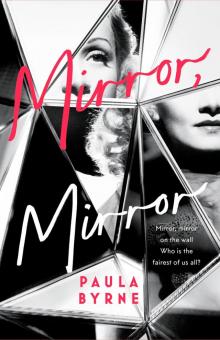 Mirror, Mirror
Mirror, Mirror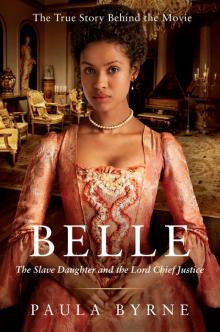 Belle
Belle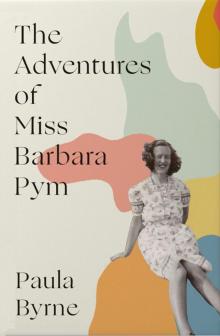 The Adventures of Miss Barbara Pym
The Adventures of Miss Barbara Pym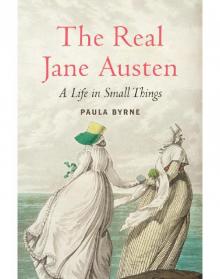 The Real Jane Austen
The Real Jane Austen Look to Your Wife
Look to Your Wife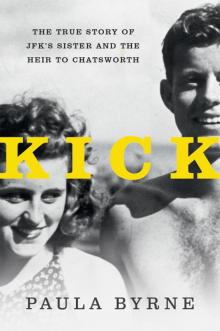 Kick
Kick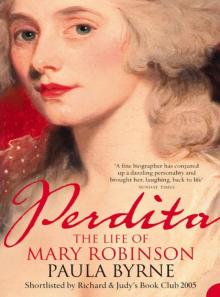 Perdita
Perdita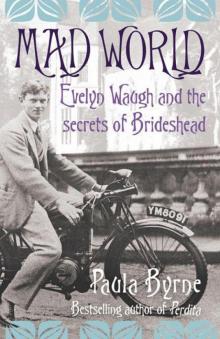 Mad World: Evelyn Waugh and the Secrets of Brideshead (TEXT ONLY)
Mad World: Evelyn Waugh and the Secrets of Brideshead (TEXT ONLY)